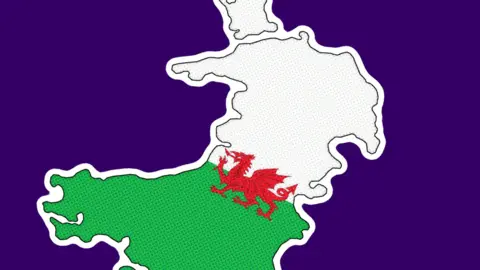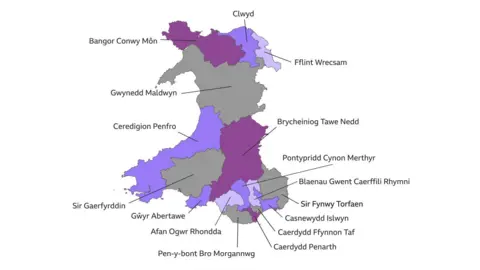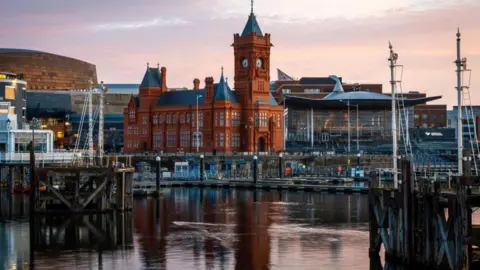What's your Senedd constituency?
 Getty Images
Getty ImagesOn 7 May 2026, voters in Wales will head to the polls for the next Senedd election.
It is likely to be one of the most consequential elections to Cardiff Bay since the National Assembly for Wales was established in 1999.
A brand new set of constituencies has been created for this election as part of wider changes to the way the Senedd is elected.
Here's a brief guide to the new electoral map.
What's changing?
Currently the Senedd has 60 members.
Forty of them are elected to represent individual constituencies.
The remaining 20 are regional Members of the Senedd (MS), with four politicians elected from each of the five electoral regions across Wales.
But next year the total number of MSs in Cardiff Bay is increasing to 96, and the electoral map is being completely redrawn.
The existing constituencies and regions will all go.
They'll be replaced with 16 new, larger constituencies and each one will be represented by six MSs.
What are the new constituencies?

Some of the new constituencies are vast, with Gwynedd Maldwyn stretching from the westernmost tip of the Llyn Peninsula all the way to the border with England.
Here's the full list of the new constituencies:
- Bangor Conwy Môn
- Clwyd
- Fflint Wrecsam
- Gwynedd Maldwyn
- Ceredigion Penfro
- Sir Gaerfyrddin
- Gŵyr Abertawe
- Brycheiniog Tawe Nedd
- Afan Ogwr Rhondda
- Pontypridd Cynon Merthyr
- Blaenau Gwent Caerffili Rhymni
- Sir Fynwy Torfaen
- Casnewydd Islwyn
- Caerdydd Penarth
- Caerdydd Ffynnon Taf
- Pen-y-bont Bro Morgannwg
How were the new seats decided?
The new map has been drawn up by Democracy and Boundary Commission Cymru.
Because of a lack of time ahead of the next Senedd election, the commission was told to take the 32 Welsh constituencies used at the last Westminster election and pair them up to create 16 new super-constituencies.
The commission was told the paired-up seats had to be "contiguous", and it interpreted this to mean that there had to be a direct road link between them.
The commission will be able to review the map following the election and consider changes ahead of the next vote in 2030.
 Getty Images
Getty ImagesWhy do constituencies only have Welsh language names?
The commission was asked to try to come up with a single name for each of the new constituencies.
It believes the names chosen "are acceptable and recognisable for people across Wales".
However, while language campaigners have welcomed the decision to use Welsh-only names, others have criticised it.
Welsh Conservative MS Andrew RT Davies said that because Wales is a bilingual country, the constituency names "should be in both languages".
